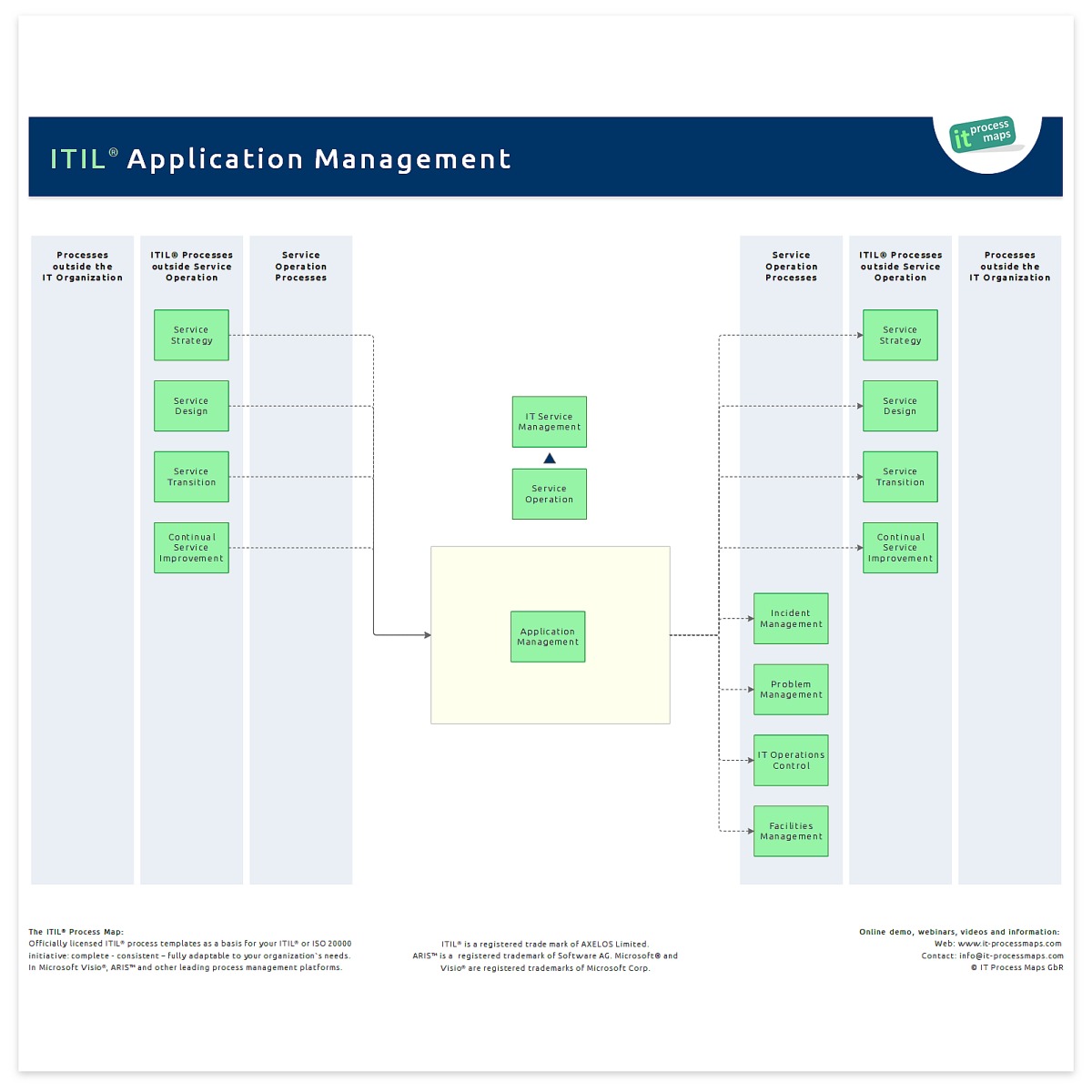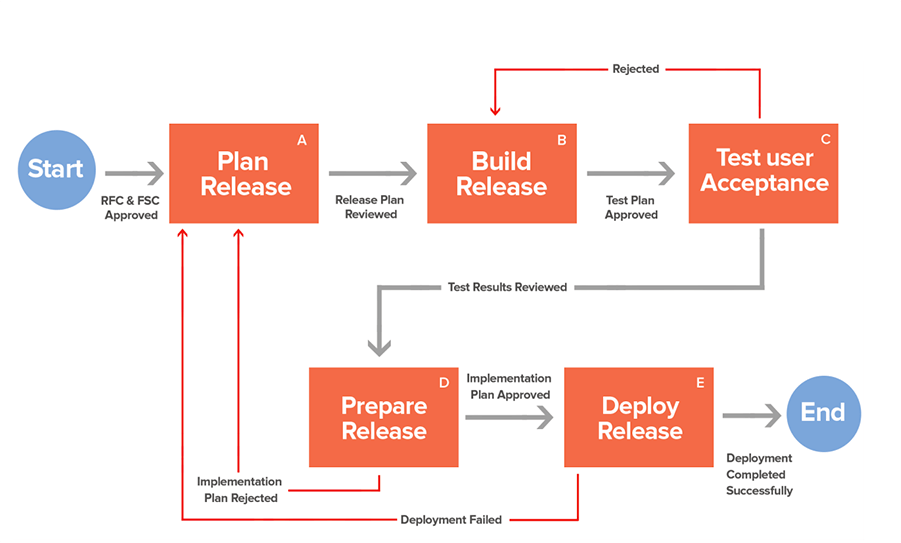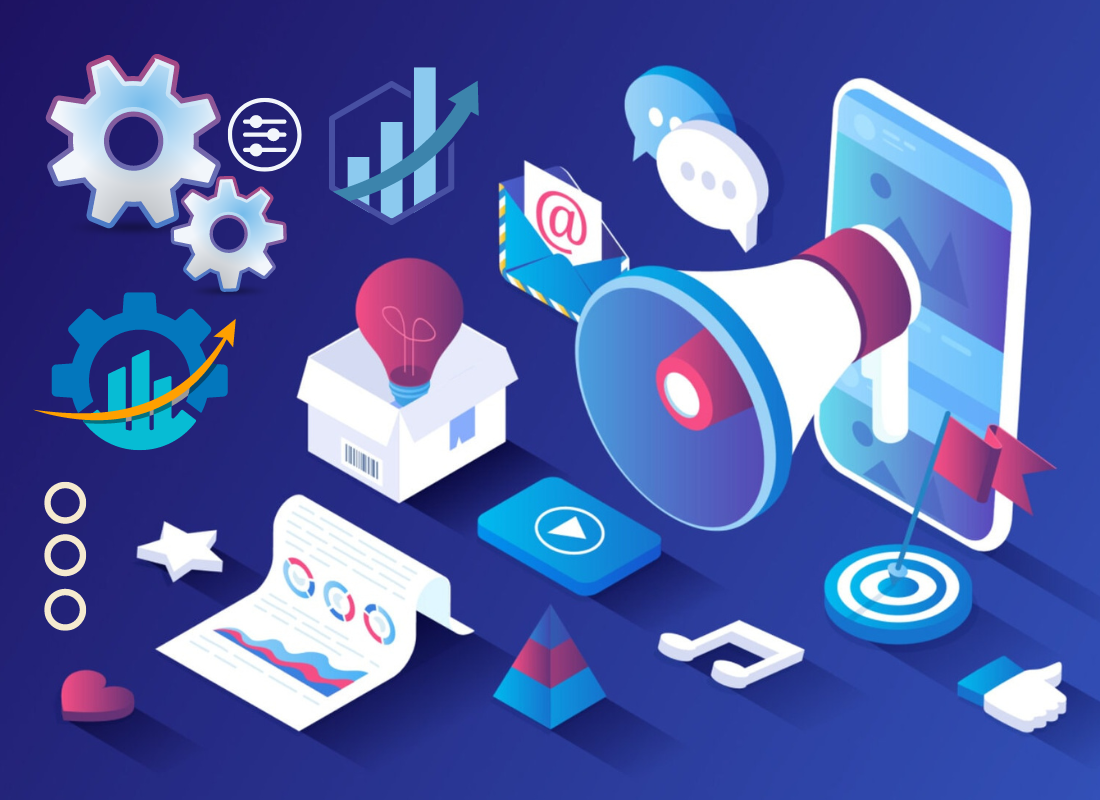Application Management Outsourcing (AMO) is a subset of application outsourcing. Usually, it includes changes that generally take less than some predefined time to implement. Examples of maintenance include regulatory changes, software upgrades, new release installations, and “fix it if it breaks” troubleshooting. AMO may involve the transfer of people and application software to the vendor.
Realistically speaking, how many apps are there in the world? Markedly, if we look at the latest statistics, the leading app stores at the start of 2022 contained more than 6.8 billion applications available. Eventually, there is an application for almost everyone in the world! But only a few have perspectives to come close to the success of such loud names as TikTok, Zoom, or CashApp.
Usually, application management outsourcing comes as an effective solution to this challenge. It’s an effective method that allows businesses to manage their apps in the best possible manner. Moreover, it frees up resources and lets the organization concentrate on the main business. But managing the applications that drive organizations can be challenging, especially in the commercial sector.
Innovative ideas, devoted teams, the latest technology, and clever application maintenance outsourcing are the primary steps toward the top in this highly competitive market. With that in mind, today, we’ll explore application management outsourcing in this blog. We’ll also examine the significance of application management outsourcing, its ultimate roles, varieties, methods, and more.
Understanding What An Application Management Outsourcing (AMO) Entails
To enumerate, Application Management Outsourcing (AMO) refers to contracting specialized service providers to manage, maintain, and support the applications. Furthermore, application management outsourcing allows businesses to delegate responsibility and oversee their software applications well. We advise you to learn from others’ mistakes and follow our guide for more information.
One thing is for sure: These days, our mobile computing devices have gone far beyond simple tools for communication and entertainment. eMarketer found that around 90% of our smartphone time is spent while interacting with one application platform or the other. It is no wonder a modern business can’t meet customers’ expectations without a well-performing application solution.
Generally speaking, Application Management (AM) is the software lifecycle process — it covers how an application operates, its maintenance, version control, and upgrades from the cradle to the grave. Application management services are an enterprise-wide endeavor providing governance designed to ensure applications run at peak performance and as efficiently as possible.
From the end-user experience to integration with enterprise back office functions such as database, ERP, and SaaS cloud functions such as CRM. So, in this manner, AM acts as a service operation function that manages and supports applications and critical stakeholders who provide operational proficiency or technical expertise through the lifecycle. There are various processes to note.
Why Consider An Effective Application Management Outsourcing (AMO)
In other words, AMO is the ongoing maintenance, management, conversion, enhancement, and support of an application portfolio by an external company. The ultimate AMO processes goal is to implement efficient, reliable, and cost-effective code that enables an enterprise to meet its business objectives by ensuring that the required capabilities—both management and technical—are in place.
AMO is also essential to further ensure that technical issues are rapidly diagnosed and resolved. On that note, some of the most common AM processes include Application Lifecycle Management (ALM) and Application Performance Management (APM). Application management is a critical factor in a business’s ability to innovate. It ensures that business functions are appropriately addressed.
Given various modern applications, business process solutions can be brought to market more efficiently, quickly, and at a lower total cost. Effectively managed applications are more reliable and less prone to failure, which could lead to loss of functionality. When applications are efficiently managed, more IT resources are available to focus on new business challenges and competitive issues.
Thus, application management can reduce the risk of downtime, improve overall business continuity, and optimize performance. In particular, the application lifecycle and performance management teams can make informed decisions, such as whether an application should be modernized or replaced or where the application should be hosted. There are several stakeholder groups.
Some stakeholder groups include:
- Application Manager/Application Analyst: Owns the AM process and thus manages the overall application lifecycle. Typically, there would be one Application Analyst or a team of Application Analysts for each primary application. Also responsible for performing skills gap analysis and acquiring needed skills or staff.
- Business Unit Owners: Business-level staff members who view applications and AM regarding bottom-line benefits, increased productivity, impact on revenue, and improved competitive stance.
- Developers/DevOps/DevSecOps: This group of IT professionals is charged with the design, development, deployment, integration, security, and maintenance of applications.
- Potential Application Users: Users provide feedback on productivity and performance, and critical concerns for users include the privacy and security of the applications.
By incorporating new capabilities and monitoring user issues, application management can provide an enhanced end-user experience, which not only increases productivity but also helps accelerate the adoption of new applications or features. So, the importance of application management to the bottom line is manifold. Efficient management strategies reduce person-hours spent in meetings.
In addition, it also helps in yielding higher productivity. Likewise, solid and effective application management practices can reduce the need to retain expensive outside consultants and lower overall operating costs as application problems decrease. Be that as it may, there are other reasons why application management is significant for today’s technology and data-driven business world.
1. Financial Saving
As a rule of thumb, application management outsourcing can save money by avoiding expensive recruitment and training expenses. Application management experts are dedicated to optimizing application performance. Moreover, they can identify and resolve issues promptly. Additionally, outsourcing providers often have competitive prices, making it a budget-friendly choice.
2. Great Competency
Businesses can redirect their internal resources by entrusting the management of applications to specialists. This is towards core business activities, innovation, and strategic initiatives. As a result, it reduces downtime and ensures a seamless user experience. Furthermore, this helps organizations stay competitive in their respective operational business industries.
3. Specialized Skills
The majority of outsourcing companies engage a group of experts with expertise in various technologies and application domains. As a result, their expertise ensures that applications are managed and optimized effectively for performance.
4. Flexible Scalability
Application management outsourcing allows organizations to scale their application management services up or down. It is based on their changing needs. So, this flexibility is precious in industries with fluctuating demand.
5. Risk Mitigation
Outsourcing partners often have established best practices, industry expertise, and compliance knowledge. As a result, this helps mitigate risks related to data security, regulatory compliance, and technology changes.
The Topmost Common Application Management Outsourcing (AMO) Types
AMO helps free up valuable IT, line of business (LOB), and DevSecOps resources. Even large enterprises utilize AMS services to help reduce backlogs, as evidenced by a Gartner report showing that IT backlogs were hindering application adoption. Once the build-vs-buy decision for a given application is made, most AMO stakeholders collaborate with technical teams, including DevSecOp teams.
Through the help of AMO, enterprises can prevent these backlogs – and the user dissatisfaction, interruptions, and other inefficiencies those backlogs cause. This is especially true through outsourcing those apps’ monitoring, management, bug-fixing, and optimization tasks to an AMS provider. Application management outsourcing agents help mitigate continuity risks when critical personnel leave.
They also reduce the time required to backfill necessary AMO skills. They can contribute to every application, from web-based applications to database management to custom in-house business code developed on legacy platforms. For many small/medium businesses (SMBs), AMS providers may be the only reasonable way to achieve a robust application lifecycle management process.
Given the limited IT resources, most AMS experts achieve a robust application lifecycle management process. In layman’s language, efficient application management outsourcing offers various options for organizations—this is to consider based on their needs.
The Main AMO Types:
- Onshore Outsourcing: This entails collaborating with service providers in the same nation. So, it’s good for maintaining proximity and accessible communication due to shared time zones.
- Nearshore Outsourcing: Collaborate with providers in neighboring countries. It balances cost savings with proximity. As a result, it makes it easier to manage projects with similar time zones and potentially lower labor costs.
- Offshore Outsourcing: Contract with application management outsourcing providers in distant, cost-effective regions. So, while it can save money, it may pose challenges due to time zone differences.
- Comprehensive Outsourcing: Outsource the management of your entire application portfolio. It’s suitable for organizations looking to offload responsibility for all applications. This ranges from legacy systems to modern cloud-based solutions.
- Selective Outsourcing: Outsource specific applications or categories while managing others in-house. Moreover, it offers flexibility, allowing organizations to focus on outsourcing resource-intensive applications.
- Managed Outsourcing: Entrust a third-party provider with end-to-end application management. It covers infrastructure, security, maintenance, and support. So, this is ideal for those seeking a comprehensive, hands-off solution. If you have decided on the type of application management outsourcing, you are probably looking for the proper process.
Notably, the AMO/AMS market is rapidly growing, with estimates from Grand View Research indicating that the global marketplace will exceed $87B by 2025. Be that as it may, the following section will provide AMO considerations and a step-by-step procedure.
The Topmost Application Management Outsourcing (AMO) Considerations
Since not every organization can staff full-time AM positions or is already dealing with an IT backlog, many organizations rely on Application Management Services (AMS) to augment their AM capabilities. AMS organizations enable the outsourcing of application maintenance and monitoring. AMS firms then shoulder the responsibility of patch management, bug fixes, and enhancements.
Moving forward, we know application management outsourcing benefits all business enterprises in one way or another. But still, some considerations will confirm the need for your business. Traditionally, Application Management was part of the IT Infrastructure Library (ITIL) processes, specifically as part of the ITIL Process Map, as outlined in its application management process illustration below.
AMO helps to ensure there are requisite skills to design, test, manage, and improve the application. These services are on hand or acquired and constantly refined to meet changing environments and needs. Note the exact functions of an application system vary. Some systems continuously evolve, like the development methodologies, from waterfall to agile to cloud-native technologies.
It would be best to start by carefully arranging your goals and directions for effective application management. Consider the primary aims and the essentials for your success and future development. Think about how you will set the critical stages in the ongoing support of your product. Organizations should consider several crucial factors before opting for AMO, meaning business projects.
(a). Assess your portfolio
Evaluate your organization’s applications to decide which ones are suitable for outsourcing. Think about how important and complex they are and how they fit into your strategy.
(b). Define clear objectives
Figure out what you want to achieve with outsourcing. So is it about saving money, improving performance, or a mix of both?
(c). Choose the right vendor
Set criteria for selecting your outsourcing partner. Look at their track record, customer feedback, price, cultural fit, and security measures. This ensures you pick a partner who can handle your applications well.
(d). Legality and contractual
Think about the legal and contract stuff. Ensure your Service Level Agreements (SLAs) are clear on performance and penalties. Protect sensitive data with vital confidentiality and data protection clauses. Plan for a smooth exit strategy if you end outsourcing.
(e). Means to deal with risks
Identify possible problems with outsourcing and devise ways to deal with them. Think about losing control, ensuring quality, communication, security, and getting stuck with one vendor.
(f). Get ready internally
Ensure your organization can outsource app development to handle the change and manage the partnership effectively. Next, let us go ahead now and look at the types that application management outsourcing offers.
The Best Practices For Strategic Application Management Outsourcing Process
It’s essential to realize that application management outsourcing managers are also IT experts. They own the AMO process that manages the application software lifecycle within the enterprise. Typically, application managers are not developers or users, rather they are analysts who help define the need for new apps, communicate their findings to other stakeholders, lead implementation, etc.
In addition, they must also possess some leadership abilities to present and promote their suggestions and see them bear fruit. Additionally, experience in developing training programs is a big plus, as are advanced data analytics skills. AMO aims to combine these multiple practices into a comprehensive management methodology encompassing legacy, agile, and cloud-native development.
Maintenance and retirement of applications are also part of the IT team. In most cases, application managers are problem solvers and, as such, must have solid analytical skills. They are also coupled with the ability to develop creative solutions to problems. Since AMO stakeholders exist throughout the organization, application managers must have solid communication skills.
Most enterprises adopting AMO have also embraced Continuous Integration (CI) and Continuous Delivery (CD) of applications that embody many changes over time into a single release. Ultimately, the process of application management outsourcing involves several stages. It ensures a successful and efficient transition of application management responsibilities, such as follows:
1. The central outsourcing project initiation
To start, define what you want to achieve with AMO. Create a team to lead the process. Moreover, this team should include people from different departments like IT, legal, and finance.
2. Vendor selection and contract negotiation
After defining your goals, evaluate potential outsourcing vendors. Look at their experience and how well they fit with your organization. Furthermore, send them a request for proposals outlining your requirements. Likewise, choose the best-fit vendor. Then, negotiate the contract terms, including performance expectations and costs.
3. Transition and knowledge transfer
Once you’ve selected the project, plan how the transition will happen. Work closely with the management outsourcing vendor to make sure they understand your systems. Ensure that knowledge transfer is smooth and that your team is ready for the change.
4. Ongoing management and communication
After the transition, maintain clear communication with your outsourcing partner. Regularly review how things are going and ensure they meet the agreed-upon service levels. Moreover, communication is vital to keeping the partnership effective.
5. Performance monitoring and improvement
Continuously monitor the performance of your applications. Identify and address any issues promptly. Furthermore, use data and feedback to improve your strategic application management outsourcing plan over time.
The Future Trends In Outsourcing Experts For Optimization Processes
As you can see, application management outsourcing provides significant benefits for companies in both the current support and the ongoing growth and progress. Moreover, outsourcing services enable the creation of the best suitable models for cooperation. Let us turn to the next part of our guide and see some futuristic AMO insights on delivering top-quality service and performance.
According to Grand View Research, financial services and healthcare drive demand for application management services today. They actively incorporate apps into their workflow, requiring the highest security, functionality, and the latest tech to guarantee the best performance. Most companies in other industries have already introduced or are on the way to building their applications.
According to Statista, by 2023, the revenue from mobile applications will hit $935 billion, and by 2025, people will have downloaded about 187 billion applications. Unfortunately, many recent examples show us that launching an app is insufficient for business success. We will recall the revolutionary Pay by Touch application established in 2002. They were among the first pioneers.
Eventually, they provided biometrically personalized, highly secure solutions to access credit cards, checking, healthcare, loyalty, and other sensitive personal data. Of course, the application could have changed the world of payments decades ago. However, their lack of resources in providing proper application management led to bankruptcy in 2008 and left their clients in the dark.
In Conclusion;
Application Management Outsourcing (AMO) is a potent strategy in today’s business world. It helps organizations manage software applications more efficiently. So, understanding the steps in AMO is crucial. This is for a smooth transition and productive partnership with an outsourcing provider. You should evaluate your application portfolio, set goals, and select a vendor to succeed.
Conversely, Application lifecycle management (ALM) describes the ecosystem that manages an application from the cradle to the grave. ALM comprises stakeholders, ALM tools, and a management process spanning each phase of an application’s existence. Any enterprise can easily and quickly evolve from traditional waterfall to Agile Methodology and DevOps to cloud-native applications.
ALM tools and processes evolve in sync, so there may be multiple ALM processes in a given organization, depending on where they transition from traditional to modern applications. Thus, ALM encompasses the lifecycle of applications by considering the need for maintenance and updates as an ongoing process. It also provides all stakeholders with visibility into the development process.
At the same time, when combined with efficient AMO practices, ALM offers a clear view of where the enterprise is in developing, integrating, or maintaining a given application. In other words, most business enterprises often rely on one or more ALM application tools to facilitate the ALM process, helping track version control, collaboration, and requests for bug fixes and new features.
Other More Related Resource Reference Topics:
- How Web Design Agency Outsourcing Benefits Business
- The Top #10 Advantages Of Outsourcing Software Development
- How Recruitment Process Outsourcing (RPO) Is Empowered By AI
- Revolutionize Business Processes | 10 Hyperautomation Tools
- How A Creative Process Outsourcing (CPO) Benefit Businesses
The above steps lay the foundation for a successful AMO journey. By following these steps, you can successfully outsource your application management. This is while keeping your business objectives in focus. Moreover, you can ensure a smooth transition and ongoing collaboration with your outsourcing partner. On that note, get started on this path to optimization and success today!






